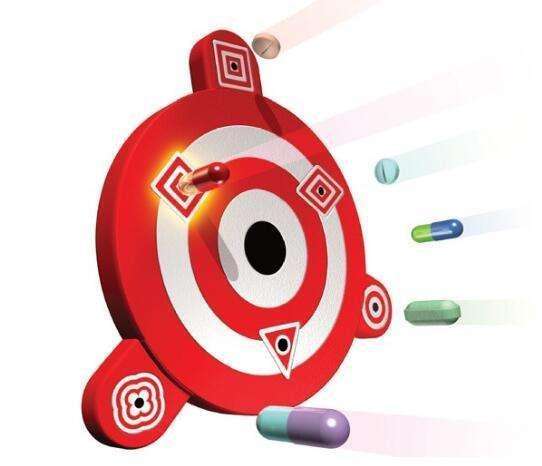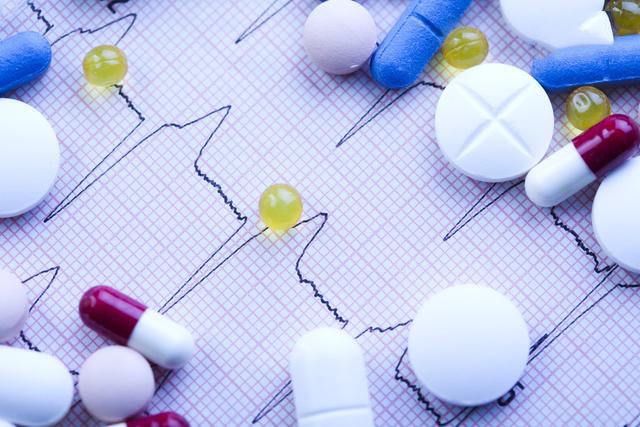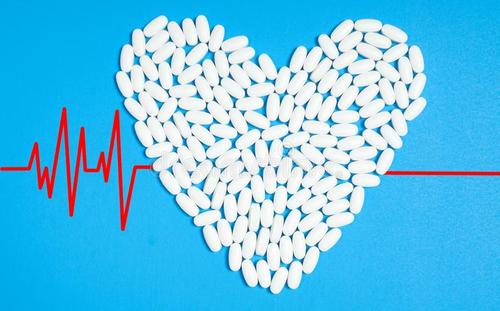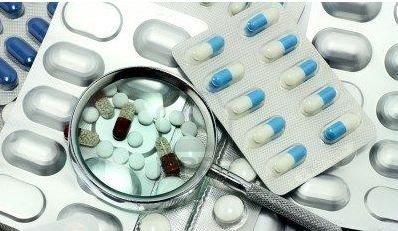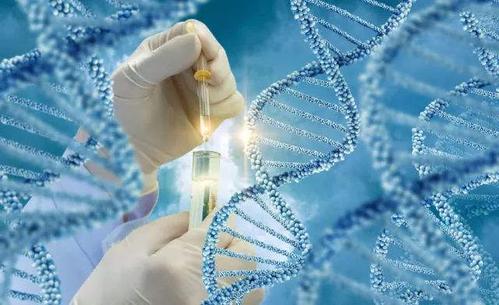盐酸甲基苄肼MATULANE(PROCARBAZINE HYDROCHLORIDE Caps)
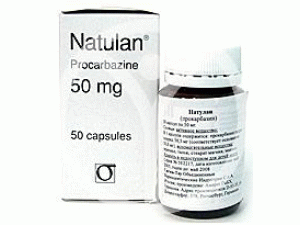 药店国别:
产地国家:美国
处方药:
所属类别: 50毫克/胶囊 100胶囊/
包装规格: 50毫克/胶囊 100胶囊/
计价单位:瓶
生产厂家中文参考译名:
生产厂家英文名:SIGMA TAU
原产地英文商品名:MATULANE 50mg/cap 100caps/box
原产地英文药品名:PROCARBAZINE HCL
中文参考商品译名:MATULANE 50毫克/胶囊 100胶囊/瓶
中文参考药品译名:盐酸甲基苄肼
曾用名:
药店国别:
产地国家:美国
处方药:
所属类别: 50毫克/胶囊 100胶囊/
包装规格: 50毫克/胶囊 100胶囊/
计价单位:瓶
生产厂家中文参考译名:
生产厂家英文名:SIGMA TAU
原产地英文商品名:MATULANE 50mg/cap 100caps/box
原产地英文药品名:PROCARBAZINE HCL
中文参考商品译名:MATULANE 50毫克/胶囊 100胶囊/瓶
中文参考药品译名:盐酸甲基苄肼
曾用名:
简介
英文药名: Matulane (Procarbazine Hydrochloride Caps) 中文药名: 甲基苄肼,甲苄肼,丙卡巴肼,异丙胺酰苄肼胶囊 药品简介 别 名:甲基苄肼,甲苄肼 英 文 名:Procarbazine Hydrochloride 作用与用途: 本品具有细胞毒作用,在体内释放出甲基正离子与DNA结合,使其解聚。临床用于治疗何杰金氏病、恶性淋巴瘤、骨髓瘤、黑色素瘤、脑瘤、肺癌。 副 作 用: 1 胃肠道反应常见有恶心、呕吐,偶见口腔炎、口干、吞咽困难、腹泻及便秘。 2 骨髓抑制可致白细胞、血小板减少,有出血倾向,亦可致贫血。、 3 较常见头痛、乏力、嗜睡,偶有眩晕、抑郁、失眠、幻觉、共济失调、复视及眼球震颤。还可见肌肉痛和关节痛等。罕见昏迷及惊厥。 4 偶见过敏性皮炎、疱疹、痒疹、色素沉着及脱发等。 5 其它症状有寒战、发热及出汗,偶见心动过速和血压下降。 6 肝、肾功能不良者慎用或减量。孕妇不宜应用。 西药剂量: 口服,从每日50mg~100mg/m2开始,1周后逐渐增加,至每日150mg~200mg/m 2为止,一般分3次服,连用2~3周,然后停药2周再用,或用维持量每日100mg/m2,至毒性出现时停药。 盐酸甲基苄肼英文版说明书 MatulaneGeneric Name: procarbazine hydrochlorideDosage Form: capsuleMatulane® (procarbazine hydrochloride) CapsulesWARNINGIt is recommended that Matulane be given only by or under the supervision of a physician experienced in the use of potent antineoplastic drugs. Adequate clinical and laboratory facilities should be available to patients for proper monitoring of treatment.Matulane DescriptionMatulane (procarbazine hydrochloride), a hydrazine derivative antineoplastic agent, is available as capsules containing the equivalent of 50 mg procarbazine as the hydrochloride. Each capsule also contains cornstarch, mannitol and talc. Gelatin capsule shells contain parabens (methyl and propyl), potassium sorbate, titanium dioxide, FD&C Yellow No. 6 and D&C Yellow No. 10.Chemically, procarbazine hydrochloride is N-isopropyl-α-(2-methylhydrazino)-p-toluamide monohydrochloride. It is a white to pale yellow crystalline powder which is soluble but unstable in water or aqueous solutions. The molecular weight of procarbazine hydrochloride is 257.76 and the structural formula is:Matulane - Clinical PharmacologyThe precise mode of cytotoxic action of procarbazine has not been clearly defined. There is evidence that the drug may act by inhibition of protein, RNA and DNA synthesis. Studies have suggested that procarbazine may inhibit transmethylation of methyl groups of methionine into t-RNA. The absence of functional t-RNA could cause the cessation of protein synthesis and consequently DNA and RNA synthesis. In addition, procarbazine may directly damage DNA. Hydrogen peroxide, formed during the auto-oxidation of the drug, may attack protein sulfhydryl groups contained in residual protein which is tightly bound to DNA.Procarbazine is metabolized primarily in the liver and kidneys. The drug appears to be auto-oxidized to the azo derivative with the release of hydrogen peroxide. The azo derivative isomerizes to the hydrazone, and following hydrolysis splits into a benzylaldehyde derivative and methylhydrazine. The methylhydrazine is further degraded to CO2 and CH4 and possibly hydrazine, whereas the aldehyde is oxidized to N-isopropylterephthalamic acid, which is excreted in the urine.Procarbazine is rapidly and completely absorbed. Following oral administration of 30 mg of 14C-labeled procarbazine, maximum peak plasma radioactive concentrations were reached within 60 minutes.After intravenous injection, the plasma half-life of procarbazine is approximately 10 minutes. Approximately 70% of the radioactivity is excreted in the urine as N-isopropylterephthalamic acid within 24 hours following both oral and intravenous administration of 14C-labeled procarbazine.Procarbazine crosses the blood-brain barrier and rapidly equilibrates between plasma and cerebrospinal fluid after oral administration.Indications and Usage for MatulaneMatulane is indicated for use in combination with other anticancer drugs for the treatment of Stage III and IV Hodgkin's disease. Matulane is used as part of the MOPP (nitrogen mustard, vincristine, procarbazine, prednisone) regimen.ContraindicationsMatulane is contraindicated in patients with known hypersensitivity to the drug or inadequate marrow reserve as demonstrated by bone marrow aspiration. Due consideration of this possible state should be given to each patient who has leukopenia, thrombocytopenia or anemia.WarningsTo minimize CNS depression and possible potentiation, barbiturates, antihistamines, narcotics, hypotensive agents or phenothiazines should be used with caution. Ethyl alcohol should not be used since there may be an Antabuse (disulfiram)-like reaction. Because Matulane exhibits some monoamine oxidase inhibitory activity, sympathomimetic drugs, tricyclic antidepressant drugs (eg, amitriptyline HCI, imipramine HCI) and other drugs and foods with known high tyramine content, such as wine, yogurt, ripe cheese and bananas, should be avoided. A further phenomenon of toxicity common to many hydrazine derivatives is hemolysis and the appearance of Heinz-Ehrlich inclusion bodies in erythrocytes.PregnancyTeratogenic EffectsPregnancy Category D. Procarbazine hydrochloride can cause fetal harm when administered to a pregnant woman. While there are no adequate and well-controlled studies with procarbazine hydrochloride in pregnant women, there are case reports of malformations in the offspring of women who were exposed to procarbazine hydrochloride in combination with other antineoplastic agents during pregnancy. Matulane should be used during pregnancy only if the potential benefit justifies the potential risk to the fetus. If this drug is used during pregnancy, or if the patient becomes pregnant while taking this drug, the patient should be apprised of the potential hazard to the fetus. Women of childbearing potential should be advised to avoid becoming pregnant. Procarbazine hydrochloride is teratogenic in the rat when given at doses approximately 4 to 13 times the maximum recommended human therapeutic dose of 6 mg/kg/day.Nonteratogenic EffectsProcarbazine hydrochloride has not been adequately studied in animals for its effects on peri- and postnatal development. However, neurogenic tumors were noted in the offspring of rats given intravenous injections of 125 mg/kg of procarbazine hydrochloride on day 22 of gestation. Compounds which inhibit DNA, RNA and protein synthesis might be expected to have adverse effects on peri- and postnatal development.Carcinogenesis, Mutagenesis, Impairment of FertilityCarcinogenesisThe carcinogenicity of procarbazine hydrochloride in mice, rats and monkeys has been reported in a considerable number of studies. Instances of a second nonlymphoid malignancy, including lung cancer and acute myelocytic leukemia, have been reported in patients with Hodgkin's disease treated with procarbazine in combination with other chemotherapy and/or radiation. The risks of secondary lung cancer from treatment appear to be multiplied by tobacco use. The International Agency for Research on Cancer (IARC) considers that there is “sufficient evidence” for the human carcinogenicity of procarbazine hydrochloride when it is given in intensive regimens which include other antineoplastic agents but that there is inadequate evidence of carcinogenicity in humans given procarbazine hydrochloride alone.MutagenesisProcarbazine hydrochloride has been shown to be mutagenic in a variety of bacterial and mammalian test systems.Impairment of FertilityAzoospermia and antifertility effects associated with procarbazine hydrochloride administration in combination with other chemotherapeutic agents for treating Hodgkin's disease have been reported in human clinical studies. Since these patients received multicombination therapy, it is difficult to determine to what extent procarbazine hydrochloride alone was involved in the male germ-cell damage. The usual Segment I fertility/reproduction studies in laboratory animals have not been carried out with procarbazine hydrochloride. However, compounds which inhibit DNA, RNA and/or protein synthesis might be expected to have adverse effects on gametogenesis. Unscheduled DNA synthesis in the testis of rabbits and decreased fertility in male mice treated with procarbazine hydrochloride have been reported.PrecautionsGeneralUndue toxicity may occur if Matulane is used in patients with impairment of renal and/or hepatic function. When appropriate, hospitalization for the initial course of treatment should be considered.If radiation or a chemotherapeutic agent known to have marrow-depressant activity has been used, an interval of one month or longer without such therapy is recommended before starting treatment with Matulane. The length of this interval may also be determined by evidence of bone marrow recovery based on successive bone marrow studies.Prompt cessation of therapy is recommended if any one of the following occurs:Central nervous system signs or symptoms such as paresthesias, neuropathies or confusion.Leukopenia (white blood count under 4000).Thrombocytopenia (platelets under 100,000).Hypersensitivity reaction.Stomatitis - The first small ulceration or persistent spot soreness around the oral cavity is a signal for cessation of therapy.Diarrhea - Frequent bowel movements or watery stools.Hemorrhage or bleeding tendencies.Bone marrow depression often occurs 2 to 8 weeks after the start of treatment. If leukopenia occurs, hospitalization of the patient may be needed for appropriate treatment to prevent systemic infectionInformation for PatientsPatients should be warned not to drink alcoholic beverages while on Matulane therapy since there may be an Antabuse (disulfiram)-like reaction. They should also be cautioned to avoid foods with known high tyramine content such as wine, yogurt, ripe cheese and bananas. Over-the-counter drug preparations which contain antihistamines or sympathomimetic drugs should also be avoided. Patients taking Matulane should also be warned against the use of prescription drugs without the knowledge and consent of their physician. Patients should be advised to discontinue tobacco use.Laboratory TestsBaseline laboratory data should be obtained prior to initiation of therapy. The hematologic status as indicated by hemoglobin, hematocrit, white blood count (WBC), differential, reticulocytes and platelets should be monitored closely - at least every 3 or 4 days.Hepatic and renal eva luation are indicated prior to beginning therapy. Urinalysis, transaminase, alkaline phosphatase and blood urea nitrogen tests should be repeated at least weekly.Drug InteractonsSee WARNINGS section.No cross-resistance with other chemotherapeutic agents, radiotherapy or steroids has been demonstrated.Carcinogenesis, Mutagenesis, Impairment of FertilitySee WARNINGS section.PregnancyPregnancy Category D. See WARNINGS section.Nursing MothersIt is not known whether Matulane is excreted in human milk. Because of the potential for tumorigenicity shown for procarbazine hydrochloride in animal studies, mothers should not nurse while receiving this drug.Pediatric UseUndue toxicity, evidenced by tremors, coma and convulsions, has occurred in a few cases. Dosage, therefore, should be individualized (see DOSAGE AND ADMINISTRATION). Very close clinical monitoring is mandatory.Adverse ReactionsLeukopenia, anemia and thrombopenia occur frequently. Nausea and vomiting are the most commonly reported side effects.Other adverse reactions are:HematologicPancytopenia; eosinophilia; hemolytic anemia; bleeding tendencies such as petechiae, purpura, epistaxis and hemoptysis.GastrointestinalHepatic dysfunction, jaundice, stomatitis, hematemesis, melena, diarrhea, dysphagia, anorexia, abdominal pain, constipation, dry mouth.NeurologicComa, convulsions, neuropathy, ataxia, paresthesia, nystagmus, diminished reflexes, falling, foot drop, headache, dizziness, unsteadiness.CardiovascularHypotension, tachycardia, syncope.OphthalmicRetinal hemorrhage, papilledema, photophobia, diplopia, inability to focus.RespiratoryPneumonitis, pleural effusion, cough.DermatologicHerpes, dermatitis, pruritus, alopecia, hyperpigmentation, rash, urticaria, flushing.AllergicGeneralized allergic reactions.GenitourinaryHematuria, urinary frequency, nocturia.MusculoskeletalPain, including myalgia and arthralgia; tremors.PsychiatricHallucinations, depression, apprehension, nervousness, confusion, nightmares.EndocrineGynecomastia in prepubertal and early pubertal boys.MiscellaneousIntercurrent infections, hearing loss, pyrexia, diaphoresis, lethargy, weakness, fatigue, edema, chills, insomnia, slurred speech, hoarseness, drowsiness.Second nonlymphoid malignancies (including lung cancer, acute myelocytic leukemia and malignant myelosclerosis) and azoospermia have been reported in patients with Hodgkin's disease treated with procarbazine in combination with other chemotherapy and/or radiation. The risks of secondary lung cancer from treatment appear to be multiplied by tobacco use.OverdosageThe major manifestations of overdosage with Matulane would be anticipated to be nausea, vomiting, enteritis, diarrhea, hypotension, tremors, convulsions and coma. Treatment should consist of either the administration of an emetic or gastric lavage. General supportive measures such as intravenous fluids are advised. Since the major toxicity of procarbazine hydrochloride is hematologic and hepatic, patients should have frequent complete blood counts and liver function tests throughout their period of recovery and for a minimum of two weeks thereafter. Should abnormalities appear in any of these determinations, appropriate measures for correction and stabilization should be immediately undertaken.The estimated mean lethal dose of procarbazine hydrochloride in laboratory animals varied from approximately 150 mg/kg in rabbits to 1300 mg/kg in mice.Matulane Dosage and AdministrationThe following doses are for administration of the drug as a single agent. When used in combination with other anticancer drugs, the Matulane dose should be appropriately reduced, eg, in the MOPP regimen, the Matulane dose is 100 mg/m2 daily for 14 days. All dosages are based on the patient's actual weight. However, the estimated lean body mass (dry weight) is used if the patient is obese or if there has been a spurious weight gain due to edema, ascites or other forms of abnormal fluid retention.Adults: To minimize the nausea and vomiting experienced by a high percentage of patients beginning Matulane therapy, single or divided doses of 2 to 4 mg/kg/day for the first week are recommended. Daily dosage should then be maintained at 4 to 6 mg/kg/day until maximum response is obtained or until the white blood count falls below 4000/cmm or the platelets fall below 100,000/cmm. When maximum response is obtained, the dose may be maintained at 1 to 2 mg/kg/day. Upon evidence of hematologic or other toxicity (see PRECAUTIONS section), the drug should be discontinued until there has been satisfactory recovery. After toxic side effects have subsided, therapy may then be resumed at the discretion of the physician, based on clinical eva luation and appropriate laboratory studies, at a dosage of 1 to 2 mg/kg/day.Pediatric Patients: Very close clinical monitoring is mandatory. Undue toxicity, evidenced by tremors, coma and convulsions, has occurred in a few cases. Dosage, therefore, should be individualized. The following dosage schedule is provided as a guideline only.Fifty (50) mg per square meter of body surface per day is recommended for the first week. Dosage should then be maintained at 100 mg per square meter of body surface per day until maximum response is obtained or until leukopenia or thrombocytopenia occurs. When maximum response is attained, the dose may be maintained at 50 mg per square meter of body surface per day. Upon evidence of hematologic or other toxicity (see PRECAUTIONS section), the drug should be discontinued until there has been satisfactory recovery, based on clinical eva luation and appropriate laboratory tests. After toxic side effects have subsided, therapy may then be resumed.Procedures for proper handling and disposal of anticancer drugs should be considered. Several guidelines on this subject have been published.1-6 There is no general agreement that all of the procedures recommended in the guidelines are necessary or appropriate.How is Matulane SuppliedCapsules, ivory, containing the equivalent of 50 mg procarbazine as the hydrochloride; in bottles of 100 (NDC 54482-053-01). Imprint on capsules用药温馨提示:当您服用此药物时,需定期接受医疗专业人士的检查,以便随时针对其药效、副作用等情况进行监测。本网站所包含的信息旨在为患者提供帮助,不能代替医学建议和治疗。
药品价格查询,专业药品查询网站,药品说明书查询,药品比价 » 盐酸甲基苄肼MATULANE(PROCARBAZINE HYDROCHLORIDE Caps)
药品价格查询,专业药品查询网站,药品说明书查询,药品比价 » 盐酸甲基苄肼MATULANE(PROCARBAZINE HYDROCHLORIDE Caps)

